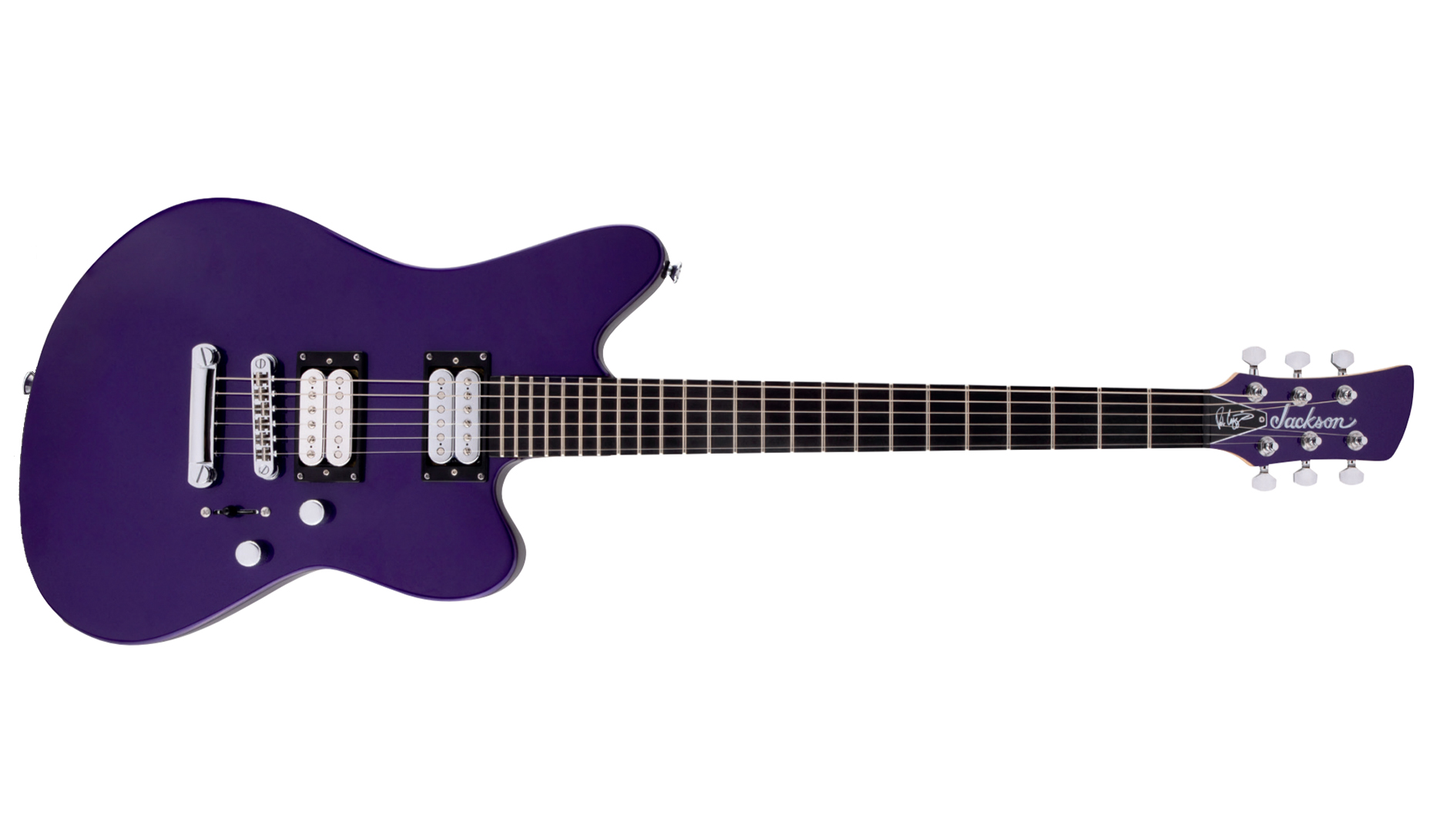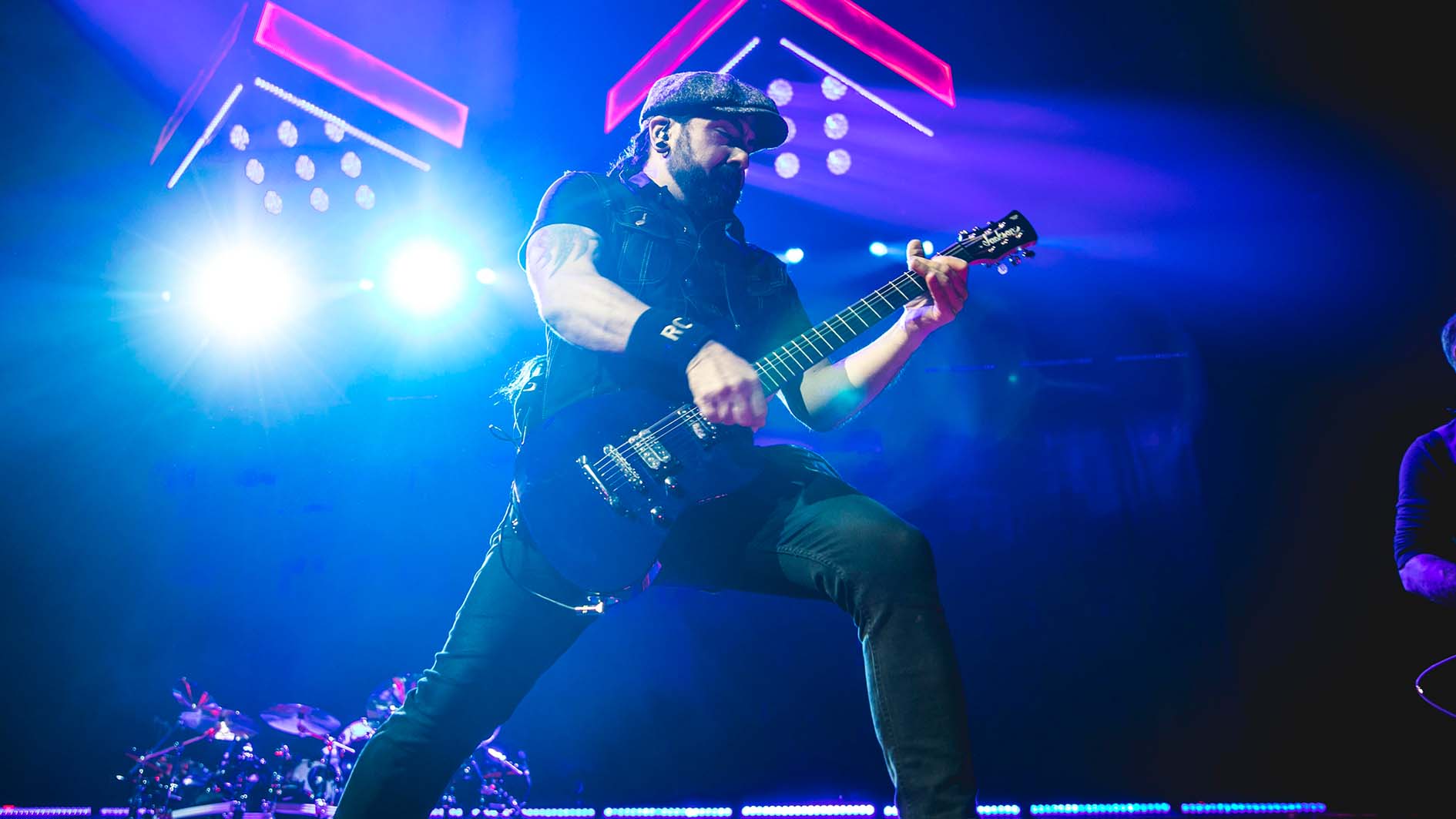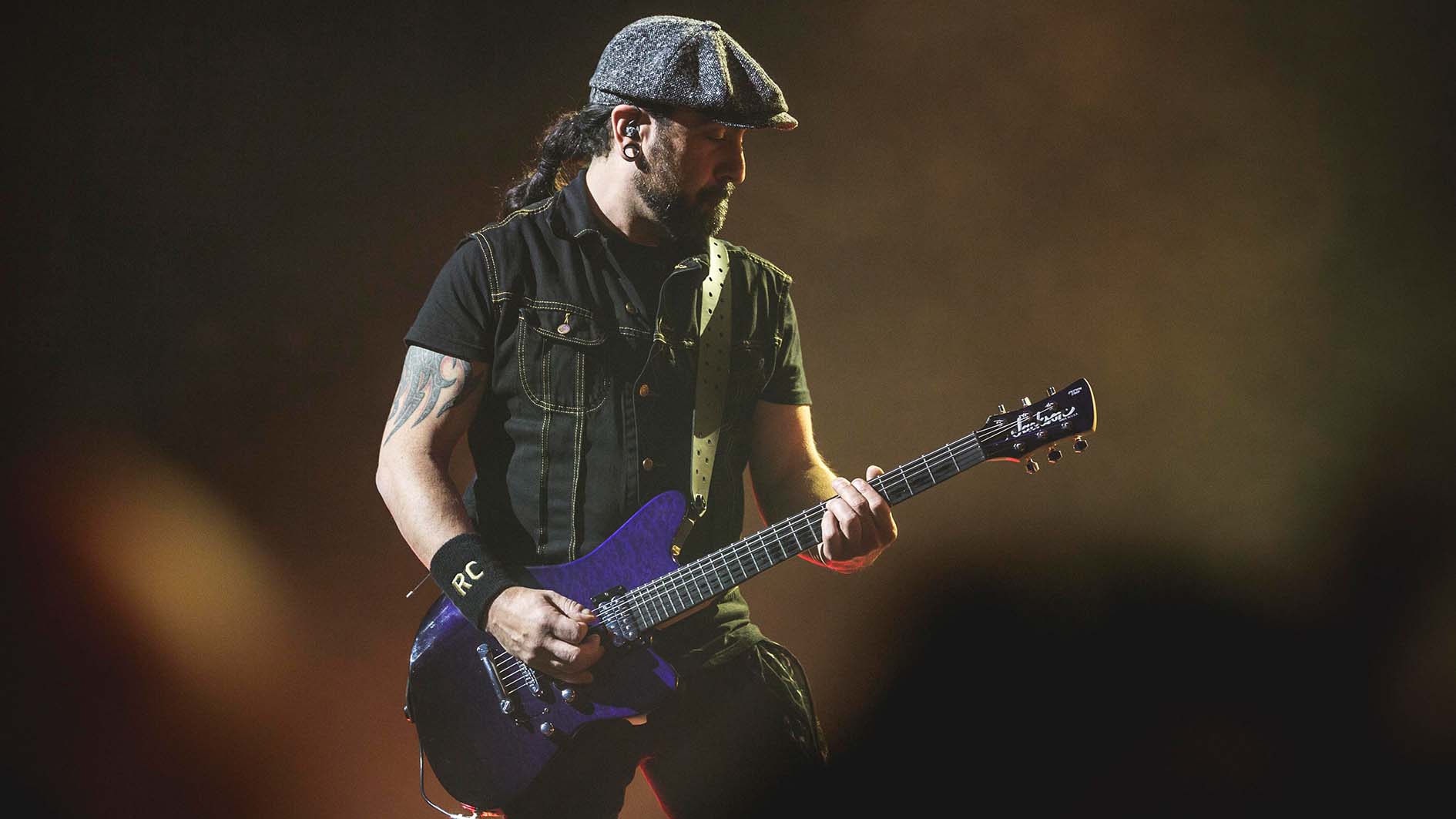Rob Caggiano waxes lyrical on his new Jackson signature, the Shadowcaster
The Volbeat lead guitarist also talks ongoing projects outside of the band, his current rig and working as both a producer and a musician at once

Rob Caggiano refuses to be put in a box. Not only is he the renowned lead guitarist for Danish heavy rockers Volbeat, and before that Anthrax, he’s also an accomplished producer, whose client list includes his current and previous bands, as well as Cradle of Filth, Jesse Malin, the Damned Things, Chthonic and more.
He’s just as comfortable playing live in front of thousands of screaming fans as he is being tucked behind a mixing board helping other artists realize their creative vision.
So when the time came to partner up with Jackson on a new signature guitar, it made perfect sense that his goal was to create a multi-purpose, workhorse axe.
“The Shadowcaster is a guitar you can play any type of music on,” says Caggiano of his new signature model. “I didn’t want it to be pigeonholed. You can play any genre of music with this.”
It’s early March when we speak to Caggiano, and the musician is at the tail end of a five-month stretch of downtime from Volbeat. But, true to form, he’s been keeping busy with production work and is currently holed up in a Delaware studio with a budding alt-pop act.
“I’m always working on different records with different people,” he says. “I’m working with a singer named Grant Dawson right now. It’s an interesting project. Genre-wise it’s a little different for me and it’s a lot of fun.”
After Caggiano wraps the sessions later this month, he’ll pivot back to Volbeat mode. The Copenhagen-based group was scheduled to hit the road in April on a headlining U.S. tour in support of their seventh and latest full-length, Rewind, Replay, Rebound. That is, until the lockdown fallout derailed those plans.
Get The Pick Newsletter
All the latest guitar news, interviews, lessons, reviews, deals and more, direct to your inbox!
But, for the moment, Caggiano is focused on the task at hand - namely, giving us the scoop on his new Shadowcaster. His debut Jackson is offered in two models: the USA Signature and the Pro Series.
Key features of the USA Signature include an alder body, 1/8-inch quilt maple top, bolt-on quartersawn maple neck with a 24-fret ebony fingerboard and a 12-16–inch compound radius, Luminlay oval side dot inlays, DiMarzio Air Norton neck and DiMarzio Rob Caggiano Signature bridge pickups, a TonePros TOM-style adjustable bridge with an anchored locking tailpiece, Sperzel sealed die-cast locking tuners and a Trans Purple Fade finish.
The Pro Series includes a similar feature set, with a few choice upgrades like a mahogany body and Purple Metallic finish.
“The Shadowcaster is probably the best-sounding guitar I ever had,” he says. “I’m not sure if it’s the shape or the wood, but the Jackson guys totally nailed it. I’m having a blast playing this thing.”

Tell us about the inspiration behind your new Shadowcaster.
"Way back in the day, like, the early '90s, I was playing a Jackson Outcaster, which is a weird, quirky guitar. I think it was only out for like a year or two - the shape is kinda based off the [Charvel] Surfcaster, like a streamlined version of that.
"The Outcaster wasn’t a high-end guitar, but it looked cool and it was fun to play... I played it live - it was kinda my main guitar for a few years. I always wanted to go back to that shape...
"So I spoke to the Jackson guys [about] my idea to build a guitar based on that shape."
Scott Ian has played Jacksons for a long time, and I know you’re a fan of Randy Rhoads, who was also an iconic Jackson player. Did you pay attention to the guitars back then?
The Outcaster wasn’t a high-end guitar, but it looked cool and it was fun to play... I played it live - it was kinda my main guitar for a few years
"I’ve always been a fan of Jackson stuff. Actually, the dude who built the original iconic Randy Rhoads guitar - Mike Shannon, he’s kind of a legendary luthier - he’s the guy that made my guitar. So I’m honored. It was really fun working with those guys."
Were you pretty hands-on with the actual process?
"I was very hands-on. It took about a year to really home in on all the details. There was one weird interesting thing. I’d been with ESP for years and my guitar was made out of Japanese ash, called Sen ash, which I guess is rare.
"It might even be illegal at this point. I originally wanted to stick with that type of wood, and the Jackson team was saying they really couldn’t get it, or it would be difficult.
"So I was like, Okay let’s try regular swamp ash. So they did the first couple prototypes out of it, but it was really weird. It didn’t sound right at all.
"We did some more digging and found out that Sen ash is not really related to swamp ash at all. It’s called that just based on how it looks. So tonally, it sounds closer to alder.
"So we tried the next prototype with alder, and that’s what we ended up sticking with because it sounds amazing."
The Shadowcaster includes your signature DiMarzio humbucker. Any plans on DiMarzio releasing a production version?
"DiMarzio is going to be releasing the signature pickup. We’re still working on some pickup cover ideas at the moment... I was playing a pickup called the DiMarzio Tone- Zone for years. I loved that pickup. It was a workhorse for me.
The fine details are hard to see unless you really get into the instrument and play it for a long time
"I wanted to start with that kind of vibe and expand on it with some things for my style: the highs and lows are both a little more extended and the harmonics really jump out. It’s a really balanced pickup. It’s not super high output, because I get most of the gain from my amp.
"The Air Norton is a very neutral pickup to my ears. It’s definitely not part of my main sound. But it compliments my signature pickup really well. I use the neck pickup mostly in the studio, but not live.
"As a matter of fact, live, I have it as low as it can possibly go - like flush with the body - because sometimes the strings get caught under the lip of the pickup. But in the studio, I’ll raise it up and use it for overdubs and different sounds and colors."

You used a Shadowcaster prototype to record 2019’s Rewind, Replay, Rebound. Did that trial by fire help you to work out the kinks?
"I made the entire record with one of the prototypes. Besides the fact that I really liked the prototype and it sounded really good... [by] playing it a lot and recording with it, it became obvious what things needed to be tweaked and changed.
"It was all minor stuff, but the fine details are hard to see unless you really get into the instrument and play it for a long time. One of the great things that happened throughout that whole process was realizing what I needed to do to make the guitar even better."
Can you also talk about what your rig looks like these days?
"I’ve been playing the Shadowcasters live, and the alder one is my main one. But the import model is phenomenal. I’m sure I’ll be playing a combination of the two live... My rig just recently became somewhat of a spaceship.
"[Laughs] In the recording studio I’m miking the cabinet and going into mic pres, and for solos I go into a compressor. And I’ve always wanted to do that in the live rig. But it was always too over-the-top to pull it off. But we finally did it.
"We got this rig builder in Denmark that’s done a lot of stuff for the Rammstein guys and Scorpions. He put this rig together for me. He builds his own mic pres and his own compressors based on the classic Neve 1073, for example, and the UA 1176. So right now I’m running Fryette Sig:X heads with four cabinets onstage behind me, and one cabinet offstage - and that’s the cabinet that gets miked.
"So there’s two mics on one speaker going into a Neve 1073-style mic pre. Then I switch channels for solos, and I have a different mic on a different speaker that gets fed into another 1073 and into the 1176 compressor, so the notes just pop out. It’s been phenomenal."

Over your career both as a musician and a producer, you’ve spent a lot of time in the studio and on the road. Do you prefer one over the other?
"I don’t like one thing over the other to be honest... I have been doing this a long time. I’ve been producing records for bands that I’ve been in for a long time, and that took a bit to get used to. Sometimes the hard part is being able to remain objective while you’re actually working with stuff hands-on.
"It took a little while, but I’m very used to it. Wearing the two hats is something I do all the time at this point... To me it’s all one thing - it’s all making music."
Brad is a Brooklyn-based writer, editor and video producer. He is the former content director of Revolver magazine and executive editor of Guitar World. His work has appeared in Vice, Guitar Aficionado, Inked and more. He’s also a die-hard Les Paul player who wishes he never sold his 1987 Marshall Silver Jubilee half stack.
Ozzy Osbourne’s solo band has long been a proving ground for metal’s most outstanding players. From Randy Rhoads to Zakk Wylde, via Brad Gillis and Gus G, here are all the players – and nearly players – in the Osbourne saga
“I could be blazing on Instagram, and there'll still be comments like, ‘You'll never be Richie’”: The recent Bon Jovi documentary helped guitarist Phil X win over even more of the band's fans – but he still deals with some naysayers













